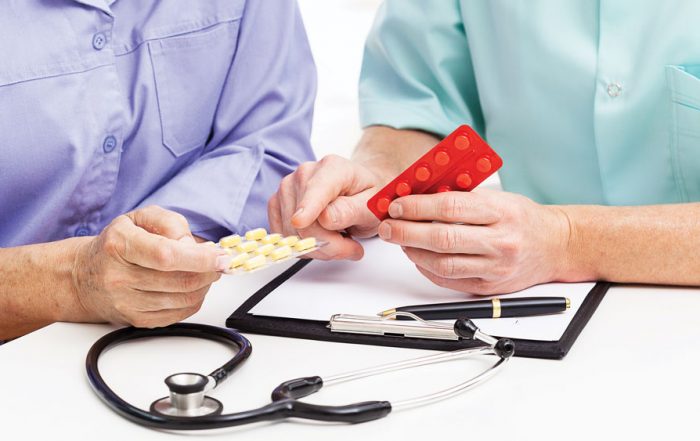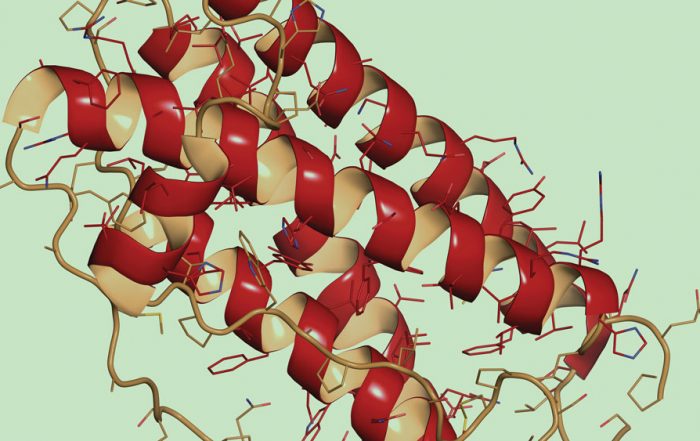
The Butterfly Effect: Reuse of a Needle Guide Triggers “Fundamental Threat to Federal-State Balance”
by Norman G. Tabler, Jr.
A urologist in Nevada reused a needle guide marked “single use only.” That action was like the proverbial flapping of a butterfly wing in South America. It triggered a series of events eventually leading a former Solicitor General of the United States to petition the United States Supreme Court for relief from a decision he called “a fundamental threat to the federal-state balance.”
Factual Background
 Urologist Michael Stanley Kaplan, M.D., practiced in a urology clinic in Henderson, Nevada. He regularly performed prostate needle biopsies. A needle biopsy is a messy and unpleasant procedure. Even describing it is unpleasant. A hollow needle is inserted through the rectal wall into the prostate gland to take a tissue sample. The needle is housed in a needle guide to stabilize it.1
Urologist Michael Stanley Kaplan, M.D., practiced in a urology clinic in Henderson, Nevada. He regularly performed prostate needle biopsies. A needle biopsy is a messy and unpleasant procedure. Even describing it is unpleasant. A hollow needle is inserted through the rectal wall into the prostate gland to take a tissue sample. The needle is housed in a needle guide to stabilize it.1
During the procedure the needle becomes contaminated, both inside and outside, with biologic debris, including tissue, blood, fecal matter, and perhaps bacteria and viruses. When the needle is withdrawn through the guide at the conclusion of the procedure, some debris comes with it, contaminating the guide. Because of the risk of infection, patients are put on antibiotics when they undergo the procedure.
Needle guides come in two kinds. Reusable guides are made of stainless steel and can be reused after sterilization. Single-use guides are made of plastic. They are subject to scratching by the needle, creating crevices that can trap debris. They are accompanied by FDA-approved labeling stating that they can’t be reused.
Until December 2010 Dr. Kaplan used stainless steel guides. When his ultrasound machine broke down that month, he bought a refurbished machine from Providian Medical, a company that sells used ultrasound equipment. His old stainless steel guide didn’t fit the replacement machine, and Providian couldn’t locate a new one. A Providian salesman told Kaplan’s office manager that three years earlier a California doctor had told him that with proper sterilization, plastic guides could be used two or three times.
That’s when Kaplan began using and reusing plastic guides, telling his staff to clean them after each use in the same manner as the stainless steel guides. The cleaning process involved rinsing the guide in water, cleaning the inside with a pipe cleaner-like brush or needle, submerging it in Cidex, and putting it in sterile water.
The office kept no record of the number of times a guide was used. Patients were not informed of the reuse practice.
Medical Licensing Board & Newspaper Ad
In March Kaplan’s medical assistants reported him to the Nevada State Medical Board for reusing plastic guides. On March 14, 2011, the Medical Board suspended his medical license. It also reported the matter to FDA.
Within a day of the suspension, the matter was the subject of a newspaper article. In response, Kaplan assembled a public relations team and on March 23 published an advertisement in the Las Vegas Review-Journal stating, among other things, that he reused plastic guides only “after being informed that it was perfectly safe to do so” by the vendor; that “the moment a question arose, he stopped the practice immediately”; and that he ended the practice on January 6, 2011, after less than three weeks.
Criminal Action
A grand jury indicted Kaplan for conspiracy under 18 U.S.C. § 371 to engage in acts that resulted in “adulteration” of a medical device under sections 331(k), 333(a)(2), and 351(a)(2)(A) of the Food Drug & Cosmetic Act (FDCA).
The conspiracy statute, 18 U.S.C. § 371, makes it a crime for “two or more persons [to] conspire … to commit any offense against the United States.”
Section 331(k) of the FDCA, in relevant part, prohibits “the doing of any act with respect to a … device … if such act is done while such article is held for sale … and results in such article being adulterated or misbranded.”
Section 333(a)(2) makes a section 331 violation a felony if the violation is done with “intent to defraud or mislead.”
Section 351(a)(2) defines an article as adulterated “if it has been prepared, packed, or held under unsanitary conditions whereby it may have been contaminated with filth, or whereby it may have been rendered injurious to health.”
At trial, the government established, among other things, that there were no data on whether plastic guides were reusable, that the Cidex label states that the product should not be used to sterilize single-use devices, and that Kaplan’s reuse of plastic guides began in December and lasted into March.
The jury found Kaplan guilty of conspiring to commit adulteration and of doing so with intent to defraud or mislead, making it a felony. Federal sentencing guidelines call for a sentence of 31 to 41 months. Kaplan got 48.
Appeal to the Ninth Circuit
Kaplan appealed to the Ninth Circuit Court of Appeals. That court’s opinion opened with the ominous—for Kaplan—statement: “It is axiomatic that physicians are expected to do no harm. When a physician breaches that duty and puts his own interests above those of his patients, great harm can occur.”2 The opinion proceeded to reject all Kaplan’s arguments, including the two primary arguments.
“Held for Sale”
One of Kaplan’s primary arguments focused on three words in section 331(k): “held for sale.” His argument was that the section does not apply to—that is, prohibit adulteration or misbranding of—all devices shipped in interstate device. Instead, it applies only to devices held for sale.
Kaplan argued that the guides were held for his use in practicing medicine—not for sale. His brief put it this way: the section “regulates the commercial sale and promotion of drugs and medical devices but does not reach a doctor’s treatment of a patient.”3
The court’s analysis opened with another observation that was ominous for Kaplan: a reminder that the statute’s “overall purpose is to protect consumers from dangerous products.”4 The court then cited federal decisions holding that the phrase “held for sale” extends to drugs and devices used by physicians in the treatment of patients. One case held that “doctors holding drugs for use in their practice are clearly part of the distribution chain” and therefore “hold drugs for sale” within the meaning of section 331(k).5
The single case from the Ninth Circuit addressing the issue concluded that a physician had not held recreational drugs for sale before distributing them free of charge to friends. But the court distinguished that case on the grounds that the decision turned on the term “sale,” ruling that giving away drugs is not the same as selling them.6
Kaplan argued that title to, and possession of, the guides never passed to the patients. But the court found that definition too narrow and in contravention of decisions in other circuits concluding that a device used by a physician on a patient is considered to have been “held for sale.”
The nature of the devices in question worked against Kaplan’s theory. As the court observed, “The single-use nature of the guides is particularly critical to our decision. A single-use device is meant to be ‘consumed’ in the course of treating a patient—just like a drug.” 7
Interference with the Practice of Medicine
In two different ways Kaplan argued that his prosecution amounted to impermissible federal interference with the practice of medicine. First, he claimed that defining a plastic guide as “held for sale” interfered with his ability to treat his patients in the manner he deemed appropriate as a professional. The court gave the argument short shrift, citing the decision in a case charging that a stem cell mixture was adulterated and misbranded.
In that case, the court held that the government was not attempting to regulate the treatment—that is, the procedures used to administer the mixture—but rather the mixture itself. The court concluded that the same principle applied in Kaplan’s case.8
Secondly, Kaplan argued that the trial court was wrong to reject his request for an instruction informing the jury of section 396 of the FDCA, which declares that “nothing in this chapter shall be construed to limit or interfere with the authority of a health care practitioner to prescribe or administer any legally marketed device to a patient for any condition or disease within a legitimate health care practitioner-patient relationship.”
The court held that the trial court was correct in ruling that the matter was adequately covered by other instructions. Besides, the Ninth Circuit reminded Kaplan, he had failed to object when the trial court denied his request for the instruction.
Permissible Off-Label Use
Kaplan had a second prong to his argument that prosecution of the case amounted to impermissible interference with the practice of medicine: the well-established principle that the FDCA does not prohibit “off-label” use of a drug or device by a physician in the course of treating a patient. Off-label use is use of a drug or device in a manner outside the scope of FDA approval.
The Ninth Circuit cited two reasons for rejecting the argument. First, the charge against Kaplan was based on adulteration of a device. The off-label use principle permits use outside the scope of labeling, but it doesn’t permit use of adulterated drugs or devices.
The second basis was Kaplan’s stated purpose for reusing the guides. That purpose was “cost-effective medicine.” But Kaplan had offered no evidence that his cost savings were passed on to the patients or that the reuse in any way benefited them. Therefore, “the argument that Kaplan used professional judgment for some legitimate off-label purpose fails.”9
Petition for Certiorari
On February 23, 2017, Kaplan filed a petition for writ of certiorari,10 with former United States Solicitor General Paul Clement listed as counsel of record. The petition, divided into three sections, reiterated the “held for sale” and “interference with the practice of medicine” arguments of the appeal to the Ninth Circuit. It also added two new arguments: that the Ninth Circuit’s decision “poses a fundamental threat to the federal-state balance” and that the case “reflects a familiar pattern of federal prosecutorial overreach.”
“Held for Sale”
The petition argued that the needle guides were not “held for sale” within the meaning of section 331(k): they were held for use by Dr. Kaplan rather than for sale to patients. The argument was essentially the same as the argument in Kaplan’s brief to the Ninth Circuit, albeit expressed in somewhat more florid terms. The following is a representative sample:
No reasonable user of the English language would say that a physician “sells” every medical product or device that she uses during a medical procedure. … When a patient emerges from a doctor’s office after undergoing a minor surgical procedure, he does not proclaim that the doctor has just sold him a scalpel, stethoscope, syringe, gauze, and latex gloves [italics in original].11
This formulation of the “held for use” argument has rhetorical appeal, but it begs at least two questions. First, does it matter what a patient does or does not proclaim after a procedure? Is that a valid test of whether or not a sale has occurred?
Second, this formulation ignores the Ninth Circuit’s express statement,
The single-use nature of the guides is particularly critical to our decision. A single-use device is meant to be “consumed” in the course of treating a patient—just like a drug.12
In its rhetorical flourish the petition conveniently—for the petitioner—mixed single-use items such as gauze and latex gloves with items generally intended for reuse, such as stethoscopes, and items sometimes intended for reuse, such as scalpels.
Interference with the Practice of Medicine
The petition argued that the prosecution of Dr. Kaplan impermissibly interfered with the practice of medicine. As he did at the Ninth Circuit level, Kaplan invoked the “off-label use” principle as protecting his actions.
But the formulation of the argument was different from the formulation below. The essence of the new formulation was that the regulation of medicine is committed to the states, as confirmed by section 396 of the FDCA, titled “Practice of Medicine,” which provides that the statute “does not encompass regulation of the practice of medicine.”
The petition used the severity of Dr. Kaplan’s sentence—48 months—to argue that the Ninth Circuit’s opinion “has profound implications for the medical profession” and constitutes “a blueprint for an untold number of additional prosecutions based on second-guessing physicians’ decisions while treating their patients.”13
The petition went on to attack the Ninth Circuit’s statement that “the FDCA is to be interpreted broadly in order to protect public health.” That, the petition argued, constitutes explicit violation of the principle that a criminal statute may not be construed liberally.
Fundamental Threat to the Federal-State Balance
The next argument in the petition was that the Ninth Circuit’s decision constituted an unwarranted intrusion of the federal government into a matter reserved to the states: regulation of the practice of medicine. For Congress to legitimately take control of that subject through the FDCA, it would need to express that intention “clearly and unmistakably.” It did not. In fact, in section 396 it explicitly disclaimed any such intention.
The petition went on to note that the states have traditionally regulated the practice of medicine, each of them maintaining its own elaborate system of licensing and regulation. In addition, state civil law and criminal statutes are available to protect patients from harm by physicians.
A Pattern of Federal Prosecutorial Overreach
The last of the petition’s arguments was an attack on “federal prosecutorial overreach.” The petition charged that federal prosecutors overreach all the time. This case, the petition argued, was part of the all-too-frequent “fact pattern … of federal prosecutors straining the text of a federal statute to cover conduct better left to state officials.”14
In this case, the overreach included straining to interpret a physician’s use of a device as a sale of the device, applying a federal statute in a realm reserved for state regulation, and imposing a prison sentence of severity out of proportion to the alleged wrong.
The petition observed that the Supreme Court has a record of granting certiorari in cases of overreach by federal prosecutors and should do so in this case.
Apparently confident of its position, the government waived its right to respond to the petition.
Petition Denied
The government’s confidence was warranted: on March 27, the Supreme Court denied the petition.
Where Does This Leave Us?
“Hard cases make bad law,” the adage goes. This case supplies a postscript to the adage: “so do distasteful facts.”
The petition for certiorari claimed that the Ninth Circuit “was clearly moved by its apparent disgust with Dr. Kaplan’s conduct.”15 It is difficult to review this case—from the Medical Board’s notification of federal authorities, to prosecution for conspiracy to adulterate with fraud or intent, to a prison sentence longer than the recommended maximum, to the Ninth Circuit’s harsh language—without recognizing at least some truth in the petition’s claim.
Arguably, that disgust led the Ninth Circuit to dismiss too easily, as well as too harshly, two respectable legal arguments asserted by the defense: the argument that section 396 of the FDCA, titled “Practice of Medicine,” makes the act inapplicable to Dr. Kaplan’s actions and the argument that “reuse” of a single-use device on a patient is not a “sale” of the device.
But the Ninth Circuit wasn’t alone in using heated language. The petition for certiorari turned the rhetorical heat up even higher and in doing so probably undercut the doctor’s strongest arguments. Rather than focusing on the two arguments noted above—section 396 and the definition of “sale”—the petition described the Ninth Circuit decision in near apocalyptic terms and as a threat to federalism itself and as part of a general, nation-wide overreach by federal prosecutors.
Thus, the petition proclaimed that “this case involves federal prosecutorial overreach of the first order”; “the Ninth Circuit’s decision is profoundly wrong”; “this issue is exceptionally important as a matter of federalism”; and “this case reflects a familiar pattern of federal prosecutorial overreach ….” In the same vein, the petition lumped stethoscopes in with single-use items in analyzing whether a one-use guide is held for “sale.”
This was a hard case. Each side had sound legal and policy arguments. In that sense, either outcome—denial of the certiorari petition or reversal of the Ninth Circuit—was bound to pose legal and policy concerns. For example, denial of the petition does, as the defense warned, raise the specter that a doctor who uses an unsterilized thermometer or scalpel may be prosecuted under the FDCA for felony conspiracy to commit acts resulting in adulteration of a medical device.
On the other hand, reversal of the Ninth Circuit might have meant interpreting the FDCA as prohibiting adulteration all along the distribution line of an article, only to permit use of the adulterated article on the patient—the one person the FDCA is intended to protect.
The risk of a case like this—a case in which highly distasteful facts lead to extreme action and language—is that the final opinion will produce principles that will then be applied to more mundane situations. The risk was probably heightened by the severity of the charges brought against Dr. Kaplan, by the severity of his sentence, and by the extreme language employed by the appeals court and by defense lawyers.
- The factual statement is taken from United States v. Kaplan, No 15-10241 (9th Cir. 2016), petition for cert. filed Feb. 23, 2017 (No. 16-1036).
- Kaplan, p. 1.
- Kaplan, Appellant’s Opening Brief, p. 30.
- Kaplan, p. 13.
- Citing United States v. Diapulse Corp. of America, 514 F.2d 1097, 1098 (2d Cir. 1975) (per curiam).
- Citing United States v. Geborde, 278 F.3d 926, 928 (9th Cir. 2002).
- Kaplan, p. 16.
- United States v. Regenerative Sciences, 741 F.3d 1314 (D.C. Cir. 2014).
- Kaplan, p. 19.
- No. 16-1036.
- Petition for Cert., p. 16.
- Note 4, supra.
- Petition, p. 23.
- Petition, p. 33.
- Petition, p. 14.
Update Magazine
July/August 2017










